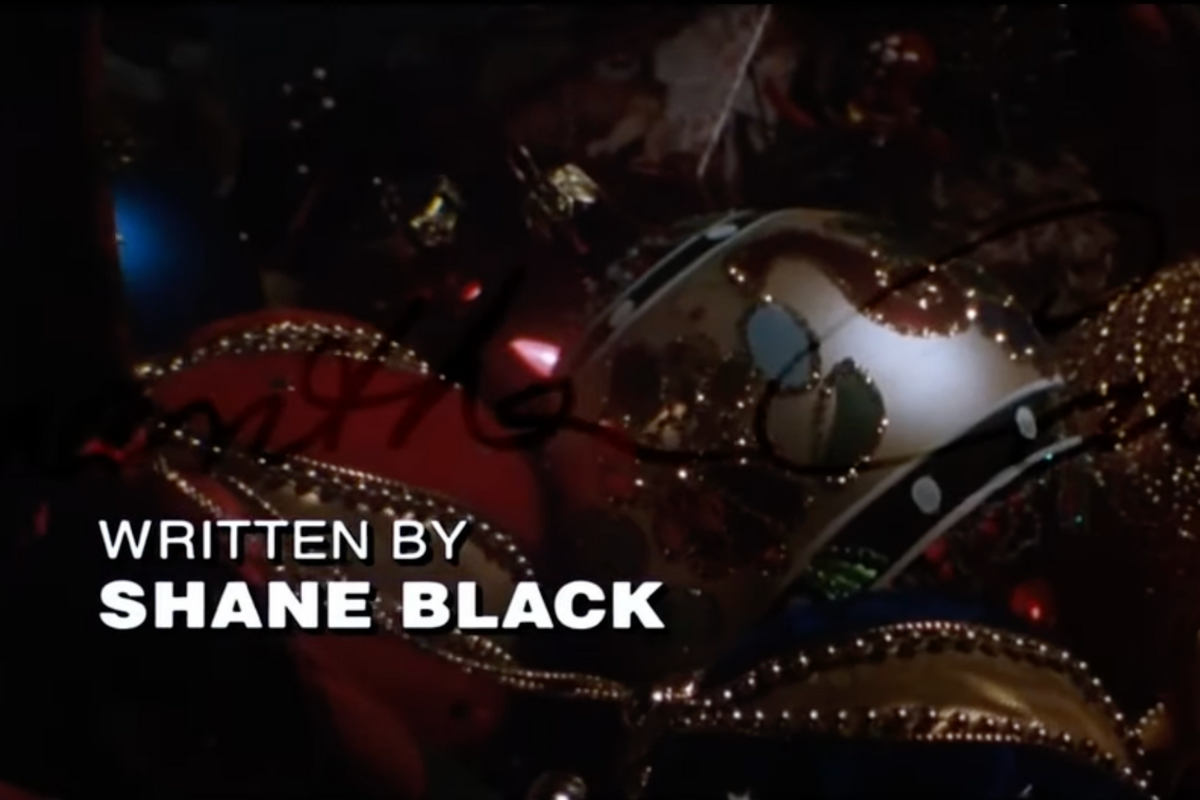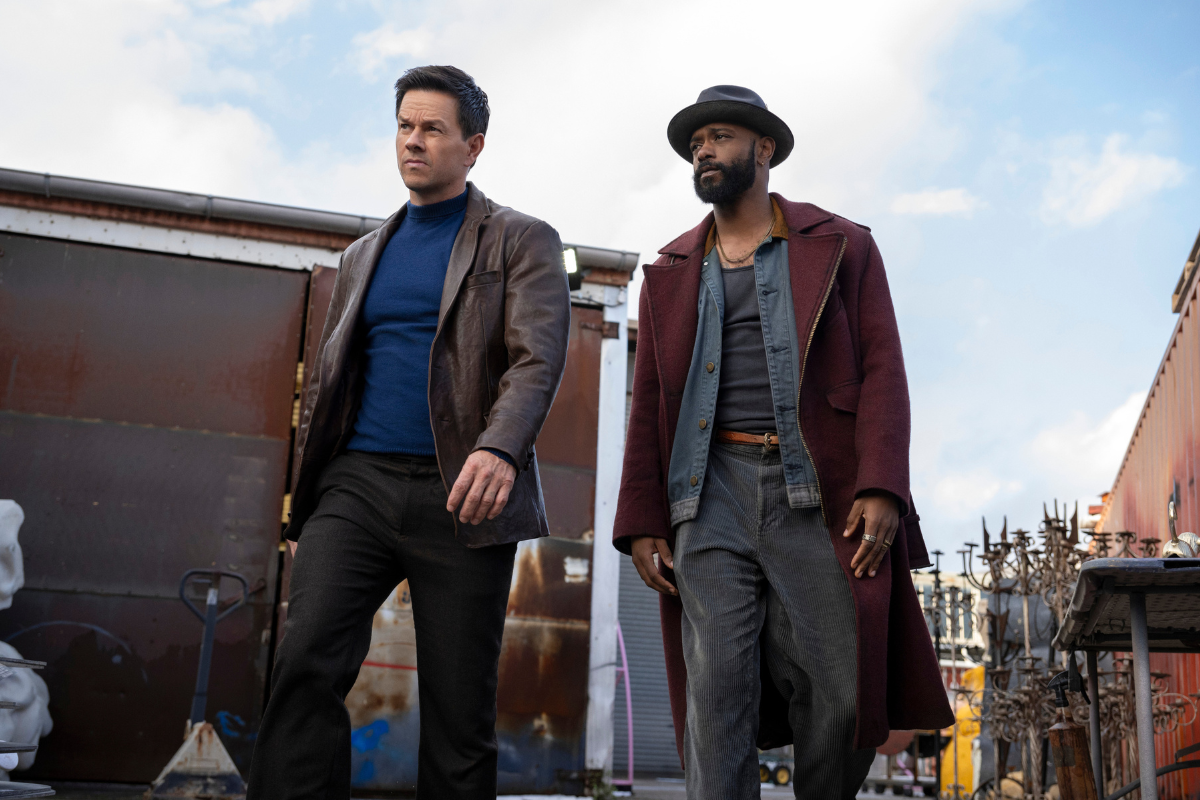Breaking & Entering: Five Things Readers Wish Every Writer Knew
Five simple but invaluable lessons to make readers’ lives a bit easier and make your script a smoother read. Plus avoid familiar pitfalls that lose our interest, detract from the strength of your story, and make scripts needlessly clutter the page. Use Barri Evins’ pointers to elevate your script rather than knocking it out of the running!
When you’re striving to break into the industry, it’s inevitable that you will face rejection along the way. It’s tough. It’s painful. And it hurts. It’s easy to imagine readers eagerly bashing your script as if they were trying to rack up points in a game of Whac-a-Mole. While it may feel that way, this is not the case.
In fact, everyone in the industry who reads is hoping to find something great. Which is why they are working their way through a massive amount of material, an onslaught that never ends, and never, ever takes a holiday much less a weekend off.
While writing is undoubtedly arduous, reading is definitely no day at the arcade.
Am I asking you to sympathize with those of us who read? Absolutely not.
We know what we signed up for. Just don’t make our job more difficult.
Am I implying that formatting choices will get you knocked out of the running? Definitely not.
Strong story wins out over typos and formatting glitches every single time.
But I’d like to invite you to take a look at the readers’ perspective.
Just for this one article, let’s turn the tables and look at it from the readers’ point of view.
Remember your goal:
“At its best, the reading experience should mimic the experience of seeing the movie – which of course, hasn’t been filmed yet. Anything that helps the movie ‘happen’ in the reader’s mind’s eye is a plus. Anything that gets in the way is a minus.”
Terry Rossio from “Points for Style” on Wordplay
Here are five simple pointers to make readers’ lives a little easier and make your script a smoother and stronger read, along with some frequently seen pitfalls to avoid.
PUT YOURSELF IN THE READER'S EYEBALLS
Reading scripts might not look like hard labor if we’re curled up on our comfy couches, but reading requires hours on end of eyeballs scanning:
left to right
left to right
left to right
Interspersed with those partial swings
back and forth
back and forth
back and forth
for the narrower dialogue columns!
It’s difficult work. Literally.
Eyes focusing for hours, means all the muscles around them tighten. This leads to throbbing temples, clenched jaws, stiff necks, knotted shoulders, and even headaches. It hurts.
The immense reading load in the early years of my career – all that time spent focusing close up – diminished my distance vision. I was truly reluctant to get glasses. But the ophthalmologist said, “Do you go to movies as well as read them? Do you want to be able to see the movies? Then get the glasses!”
Getting started in the industry as an assistant or junior exec means reading: lots and lots of reading. During the week after work, plus a massive load of “The Weekend Read.” And writing coverage for our bosses on everything we’ve read.
The reading continues throughout your career. Choosing to work in the industry means a lifetime of homework. Countless hours on top of long hours in the office.
While the burden of writing coverage for the person above us eases as we move up the ladder, the reading never stops. And it must be squeezed in around an increasingly longer workday – before, during, and after business hours, include breakfast, lunch, and drinks meetings, plus screenings. While all the dining out may sound glamorous – it is still actually work, building relationships and gathering information, the lifeblood of the business. And yet, there is still reading. If that means less time for a personal life or less sleep, that’s just the way it is.
I surveyed two dozen industry friends on their weekly reading load from the busiest time in their careers, referred to by many as “back in the day,” to the present. I got answers from studio execs, development execs, showrunners, agents, and managers. Across the board, it was a heavy load. Literally, as there were plenty of complaints about the difficulties of physically schlepping home scripts each weekend by the bag and box full.
The general response was 10 to 15 over a weekend, with a weekly load as high as 25. One junior studio exec was assigned an 800-page novel over a weekend.
In the early part of our careers, we had to get through “the stack,” to do our jobs to advance our careers, no matter how high it towered. But we were young and hungry. Ambition is a great motivator.
There are huge incentives to finding a good script and elevating it, along with the reader’s own career. So like the Energizer Bunny™, we keep reading and reading and reading.
Finding a truly good script is elating. That keeps us going and going and going: the potential to advance our careers – and the writer’s as well. This discovery is what leads to what I call the win-win-win – THE best way to advance your career. That hungry young exec will talk about their great writer find. Their recommendation, perhaps to a hungry young agent is the most effective path to getting repped. It takes you from the rarely replied to “Cold Query” to one that is scorching hot. Just don’t fumble the ball with a query that stands out for all the wrong reasons.
Later in our careers, we’re still reading, although there might be someone below us, filtering. But then you have to add in projects or drafts from clients or assignments to be filled. At this stage, when the going gets rough, the script gets skimmed or put down – unless it’s a situation where the source matters, such as a personal referral. Right back to the win-win-win!
Make the readers’ job a little bit easier, while simultaneously elevating your script to engage readers on the page.
SIGNIFICANCE
“Less is more, less is more, less is more,” she said endlessly, while writing columns that sprawl into multipart series.
What is essential for us to know to understand and advance the story? Focused description and lean dialogue have more impact than lengthy passages.
Don’t give us a laundry list of items in the store. “A neighborhood Mom n’ Pop, packed shelves offering a bit of everything, plus a smile when you walk in,” tells us how it feels as your character steps through the door. If you’re telling us about where your character lives, what is the one thing that goes to illustrating who they are? Is it waist-high stacks of yellowed periodicals, or is it so sterile a cheap motel room has more personality?
Detail that conveys what is essential to know about the setting, the atmosphere, and the character in any scene is delicious. More becomes esoteric. Focused writing proves to us that you know your story, your characters, and the world. Tell us what we need to know, no more, no less. This way things that are significant, stand out.
When you are focused, your writing is focused. When you know the protagonist’s flaws and strengths, the function a character plays in the story, the theme – the heart of your story and the message you are trying to convey – it shows in the details you choose. You don’t have to put in inappropriate camera angles and clunky insert shots. Your words shine light on what matters.
If it’s important to the story, get it onto the screen. If it’s not, get it out.
Pet Peeve: Giving every single character’s exact age.
Joe, (32) walked up to the table to take their order.
Joe? Really? A character we will never see again? No, no, no. Waste of space. Waste of your time. Meaningless. Clutters the page.
If the waitress “has been waiting tables since the deli opened its doors decades ago, is at the booth in an instant, order pad in one hand, coffee pot in the other,” then you’re conveying atmosphere in a significant setting. You're adding meaning!
And the exact age of the protagonist, unless it is crucial to the story, just needlessly limits casting. They can be a twenty-something, or middle-aged, not 26 or 54.
Children are always the exception to this rule. We need to know the ages of significant kid characters because it is essential. The difference between a three-year-old and a first grader is enormous, and the difference between five and fifteen is at least 100!
Be on the lookout for:
Character introductions that tell us things that will never come across on the screen including details about the character’s past. You’re not writing a novel! Intros that include highly specific details about clothing and appearance. “Trying too hard at the grunge look,” or “clad in dated DayGlo polyester,” succinctly reveal character.
SAY WHAT?
I know you know that the goal of the screenplay is to create a blueprint for a film. Therefore, your goal should be to put images and emotions into the mind of the reader with your words. But I find that sometimes words get in the way of the prime directive: communicate.
Esoteric words and highly specific detail might make you think you are conveying that you’re smart and that you’ve done your homework – but the potential danger is you might not be communicating to everyone. Try to make sure every reader will grasp your intention. In my column, "Use Your Words," I gave an example that communicates volumes:
Your hero may be wearing a watch that appears “more expensive than a Ferrari,” but do we gain anything by learning that the watch is a Jaeger-LeCoultre Gyrotourbillion? We learn that you have access to a computer that can search the Internet. And unless we stop reading your script to do a search of our own – Would you want that?! – we won’t know that a “Tourbillion” is a wrist-mounted anti-gravity device to improve accuracy.
Research on a period piece may make you an expert on the era. But “a 1951 Chrysler New Yorker” does not speak to everyone, while “a gleaning cherry red convertible glides up to the curb” puts an image and a feeling in our minds.
Be on the lookout for:
Specific songs you hope will convey something – if the reader doesn’t know the song, it’s wasted. Letting us know the genre from punk rock to romantic ballad, which comes across to everyone. And… readers are apt to think you naïve for including titles that are unlikely to make it to the screen through music clearance costs.
STAY FOCUSED
What’s the point? Knowing the point of the scene brings tremendous focus to your writing. Strong scenes advance plot or convey character – the best do both at the same time.
Nothing should be extraneous. If you remove the scene from your script, will it make a difference? If not, it’s out.
Knowing the purpose of a scene within a script – hopefully from the start or early on in the process – is a huge advantage in writing. If you outline, or before you start writing a scene, try this experiment: add a single phrase that sums up the focus of the scene.
Be on the lookout for:
Filler scenes that don’t advance the narrative. If you can omit it from the script and the story still works, it doesn’t belong. Montages can take up space and slow the pace without supporting the plot.
WHY DO YOU THINK THEY CALL IT THE CINEMA?
Cinematic should be your top writing goal in creating a blueprint for a movie. I’ve developed a simple definition for what makes scripts cinematic:
CINEMATIC = VISUAL + VISCERAL
Show not tell. This is a movie, a story told in pictures, not a novel.
When you’re working on a spec script, in addition to your goals for your story, your aim should be to create a great read. Engaging the reader and crafting a visceral experience for them with your words. Draw us into and put us in the shoes of the character. Let us know what they are thinking and feeling through subtext: reaction expression, body language. The most powerful subtext activates readers’ emotions, you can actually make us laugh, curl our toes with tension, or even bring a tear to our eyes. Read more on mastering subtext here.
Don’t add more words; choose powerful ones. Opt for juicy adjectives. Pick active verbs. Find words that have a depth of meaning and resonance.
Walks versus stomps.
Angry versus enraged.
Hurt versus crushed.
Old or withered?
She smiles, or she beams.
That last one is powerful enough I’m willing to bet some of you smiled just now!
In my column, "Screenwriting’s Seven Dirty Words", I’ve spelled out words that make readers wince.
Be on the lookout for:
Slipping out of Active Present Tense. A character reacts and then what they are reacting to is described. Jane cringes when suddenly an alarm goes off. Nope. "An alarm shrills. Jane claps her hands over her ears."
CUT CLUTTER
Clutter can take many forms, from wordy slugs to busy formatting choices. Most writers accept that this medium calls for white space on the page. Why cut words when you can cut distracting clutter?
Here’s my A to Z Guide to keeping your page clean:
ASTERISKS: Asterisks are for drafts, not for the honed final version that passes before a reader’s eyes.
CAPS: Caps are for characters’ names the first time they appear in the description. While you may have seen each and every sound capitalized when reading older scripts, this looks dated. The original purpose was to call attention for the sound effects crew. Opt for a cleaner, contemporary look.
Bonus: STOP overusing using CAPS so that when you NEED a SIGNIFICANT sound to stand OUT, it will. BOOM!
CONTINUEDS: Yes, screenwriting programs put them in, but choose to use the least possible. Stick to only what you need for clarity. For dialogue, it is appropriate for a line interrupted by a page break or description, but if there’s a page of action between the character’s next line, the continued is not needed. A client recently had two characters speaking at the same time, indicated by side-by-side dialogue. But beside one character’s name was an auto-formatted “(continued).” Unnecessary and confusing clutter. If you’re struggling to override the program – call tech support!
INSERTS: Calling for an insert shot really is directing. Might one really, truly be necessary? Possibly. But you are showing off your ability to write. Therefore, indicate significance with your words and what we will see in our mind’s eye will be clear.
NOTES: Notes to the reader should be minimal and essential. I’d opt for one at most. When a script uses 2 languages – please don’t take up space on the page with both the language and the translation. It makes the read needlessly difficult.
[NOTE: Italicized dialogue is in Italian and will be subtitled.]
PARENTHETICALS: I see two uses of parentheticals in scripts. Most often, beneath a character’s name, before the dialogue. They serve only two possible purposes.
To convey the tone of the line if it is important and it is not clear:
(snidely)
To clarify who the character is directing the line to in a group, if not clear:
(to Jack)
That means no description – meaning action lines – shoved into a parenthetical:
(pulling the blankets around her)
On occasion, I’ll spot a more troubling parenthetical in description that takes one of two forms.
“You talkin’ to me?”: The writer is speaking directly to the reader. Maybe you’re going for Shane Blackesque, but Mr. Black never used parentheticals when he worked to grab readers’ interest to great success by breaking the fourth wall back in the 1980s.
The Aside: Parentheticals are “a word, clause, or sentence inserted as an explanation or afterthought into a passage that is grammatically complete without it.” Parentheticals in writing are a digression.
Neither usage cuts it for me in a screenplay. When I see parentheses, I wonder if what is contained within is less than important. The writer should make that decision. If it’s important, it’s in. If it’s not, why is it there? Parentheses add visual clutter. And if you’re making us think, you’re slowing readers down.
SCENE NUMBERS: You are writing a selling script, not a shooting draft. Scene numbers are for production, to break down the script for budgeting and scheduling.
SLUGLINES: While this is at the end of my list, it is at the very top of my Pet Peeves and needlessly ticks off readers. I’ve said it before, and got hit with the blowback, but I will say it again:
We don’t read slugs.
While pro readers might read some slugs at the outset to grasp the world, I very much doubt that they continue. But the real point is:
Your script reader should not need to read sluglines.
The purpose of sluglines is to be able to break down a script to create a non-sequential shooting schedule to complete filming in the least amount of days and from there, calculate the budget. Back in Ye Olden Days, this was done with each scene assigned a strip of cardboard, color-coded for “day,” “night,” “interior” and “exterior.” Strips were grouped and arranged on a board where they could be moved around and divided into shooting days. Then all scenes on a particular set or location would be shot together. Because it costs time and money to move a cast, crew and equipment around. A solid shooting schedule takes many more elements into account, but this is the gist of it.
Of course, now there are apps for this, but the principle remains the same. Slugs are for creating shooting schedules.
They should be consistent in their description of the location and of minimal words. Not:
EXT/INT – JOHNNY’S FAVORITE DIVE BAR – MID-AFTERNOON
Because if that information is significant, it should be in the description!
And now, for my final trick, I shall prove once and for all and forevermore that readers really, truly do not read slugs.
A produced screenwriter friend sold his first spec right out of grad school, his thesis project. A high-concept piece that spanned one day in real time, and was set outdoors.
Setting at least some of the movie at night was my thesis advisor’s suggestion, which I loved and decided it would be from sundown to sunrise – “a primal tale of survival told by firelight.’ He was a working writer-producer and came on board to develop and produce. In the second draft, I put in one line of dialogue, such as, ‘I’ll meet you there at 6am.” I got a call from the producer – ‘Wait a minute, does this movie take place AT NIGHT?’ He had developed the screenplay with me and hadn’t noticed. Ultimately, the studio paid $750,000 for the screenplay without ever reading the 200 sluglines in it. When they did realize it, they wanted it switched back to daytime. So a movie I’d always thought of taking place overnight now all takes place in the sunlight. When people ask if it turned out differently than I imagined, I always say, “Night and Day.”
Chris Soth, Firestorm
Imagine how many people had to read the script to get to that point and yet – the studio had no idea that it was all set at night!
I hope this real life tale underscores my point and convinces you of what I’ve been saying for years:
WE DON'T READ SLUGS!
Therefore, please don’t bold them or underline them or both bold and underline them because you like the way it looks. And I implore you – stop debating this in writing groups. Readers don’t like the way it looks because it distracts our eye from what is truly important on the page.
Be on the lookout for:
Formatting “trends.” “I’m bolding all my slugs because I like the way it looks.” “I’m underlining mine!”
Let’s switch up that proposition. Because it’s not about you. It’s about the reader. Ideally, our eyes move smoothly, left to right, left to right. Smoothly might not be a big deal if you’re reading one script, but if your job is to read ten scripts, it matters.
I hereby declare this is no longer a justification for making unconventional formatting choices on the page.
Bonus: More MythBusters from logline length to page count.
THE EYES HAVE IT
I’ve managed to stick to Five Things, but you can find more tips to avoid ticking off readers, here.
Great scripts are not whacked for trivial reasons. We’re digging for gold. Just don’t make the job harder.
Nothing should stand in the way of your story connecting with your reader. When you are learning how to write a screenplay, you may be focused on the tackling the macro elements: plot, structure, and character. But as you progress, you will discover that the most powerful way to advance your work and your career is to engage on the page.
I guarantee these five tips will make weary readers a bit happier, and make you look like a pro. Anything that you can do to keep readers turning the pages rather than fantasizing about bashing you over the head is a positive. Making the read easier on our weary eyes helps your story be an immersive experience for the reader. This should be your goal – to draw us in and keep us engaged from start to finish.
Our eyes thank you!
Learn more about the craft and business of screenwriting from our Script University courses!
Barri Evins draws on decades of industry experience to give writers practical advice on elevating their craft and advancing their career. Her next SCREENWRITING ELEVATED online seminar with 7 monthly sessions plus mentorship will be announced in 2025. Breaking & Entering is peppered with real life anecdotes – good, bad, and hilarious – as stories are the greatest teacher. A working film producer and longtime industry executive, culminating in President of Production for Debra Hill, Barri developed, packaged, and sold projects to Warners, Universal, Disney, Nickelodeon, New Line, and HBO. Known for her keen eye for up and coming talent and spotting engaging ideas that became successful stories, Barri also worked extensively with A-List writers and directors. As a writer, she co-wrote a treatment sold in a preemptive six-figure deal to Warners, and a Fox Family project. As a teacher and consultant, Barri enables writers to achieve their vision for their stories and succeed in getting industry attention through innovative seminars, interactive consultations, and empowering mentorship. Follow her on Facebook or join her newsletter. Explore her Big Ideas website, to find out about consultations and seminars. And check out her blog, which includes the wit and wisdom of her pal, Dr. Paige Turner. See Barri in action on YouTube. Instagram: @bigbigideas X: @bigbigideas







